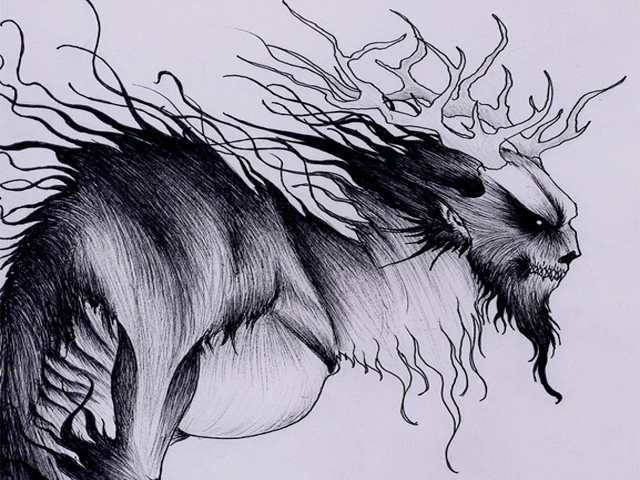Table of contents
The Wendigo
The Wendigo, originating from North American Algonkin Indian mythology, embodies the chilling concept of a cannibalistic spirit that seizes the sleep of the evil and greedy, transforming them into monstrous beings. This myth, deeply rooted in prehistoric times, evolved as a narrative to explain the desperate acts of those driven to cannibalism by cold and hunger.
Cultural Origins and Evolution
The Wendigo, or Weendigo, symbolized the consequences of insatiable greed, a manifestation driven by the spirit’s possession. Various Indian tribes, including the Ojibwa, Innu, and Naskapi, portrayed the Wendigo as a relentless, flesh-and-blood monster, perpetually hungry and hunting for victims. These tribal narratives laid the groundwork for the image that persists in Canadian settler stories.
Mythical Form and Characteristics
In its most iconic mythical form, the Wendigo emerges as a swift, colossal creature, surpassing any known animal in strength. Visualized as a decaying corpse with flowing hair and fiery breath, its heart, made of ice, becomes the key to its destruction. The legend suggests that only by taking its heart can one end the monstrous reign of the Wendigo.
Cultural Practices and Rituals
Native American tribes, aware of the threat posed by the Wendigo, engaged in the Sun Dance to protect themselves from this malevolent force, ward off evil spirits, and bolster the resilience of their warriors.
Historical Records and Interpretations
The first recorded encounter with the Wendigo dates back to the 17th century, documented by missionary Paul Jeune. His observations, hinting at a “wolf man” responsible for an attack on a village in Quebec in 1636, fueled the belief that wendigos were creatures akin to wolfmen, yetis, or even “bigfoot.”
Modern Interpretations and Medical Explanations
Modern medicine attributes many Wendigo cases to a condition known as Windigo or Witiko psychosis. Originating from North American Indian tribes like the Cree and Chippewa, this psychosis results from isolation during harsh winter conditions, leading to weakened mental and physical states. Afflicted individuals may exhibit signs of aggression and paranoia, ultimately succumbing to the overpowering urge of cannibalism.
One notorious incident in 1978, involving Alberta’s Swift Runner, highlights the devastating impact of Windigo psychosis. Starvation drove Runner to madness, resulting in the gruesome act of murdering and devouring his own family.
Legacy and Contemporary Perception
While the Wendigo legend has transitioned into a character of B-category horror films and series, its historical roots and cultural significance endure. In the modern era, cases of Wendigo-like behavior are often viewed through the lens of mental disorders, with tribes abandoning rural lifestyles contributing to the rarity of such incidents.
Conclusion
The Wendigo, with its diverse names and a rich presence in the folklore of Algonkin, Ojibwa, Eastern Cree, and other tribes, remains a captivating and haunting cultural symbol. Its legacy persists as a testament to the complex interplay of mythology, psychology, and cultural evolution.

